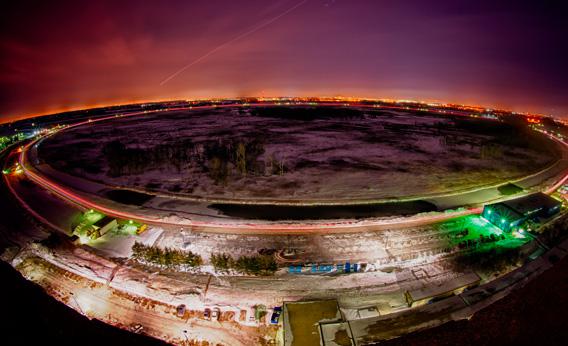After 28 years of operation, the Fermi National Accelerator Laboratory’s Tevatron—a 4-mile-long ring of superconducting magnets and vacuum tubes buried in the suburban soil just outside Chicago—will be turned off Friday afternoon. Until the construction of the Large Hadron Collider at CERN in 2009, the Tevatron was the most powerful particle collider in the world, generating subatomic bits of matter not seen since the Big Bang. How would you turn off such a device—is it as easy as pulling the plug?
Sort of. Engineers shut down the Tevatron via a two-step process that involves little more than entering a couple of commands into a computer terminal in the main control room. The first clears the accelerator tunnel of high-energy particles, after new protons and anti-protons have stopped being injected into the machine. By typing a few instructions (including “KILL_BEAM”) into a device called a sequencer, a set of magnets are activated so as to kick the particle beam into an auxiliary tunnel and toward a thick metal target where it will be absorbed. The second command orders the magnets to “ramp down,” dumping their 5,000-amp current into resistors and gradually lowering the energy of the system to nothing. It’s not a particularly unusual or dramatic process—engineers do it on a regular basis for machine maintenance.

Photo courtesy Fermi National Accelerator Laboratory.
For the purposes of the closing ceremony on Friday, the engineers have created two special buttons to execute the commands, a red one labeled “BEAM” and a blue one labeled “RAMP.” Once the buttons have been pressed, there’s not much left to do but some housekeeping. Over the coming week, engineers will gradually bring the magnets up to room temperature from their operating state a few degrees north of absolute zero, and break the vacuum seal on the tunnel. Finally, the cooling gases and fluids will be drained.
Fermilab officials expect to open a section of the Tevatron to visitors sometime next year.
Got a question about today’s news? Ask the Explainer.
Explainer thanks Roger Dixon and Duane Newhart of the Fermi National Accelerator Laboratory.
